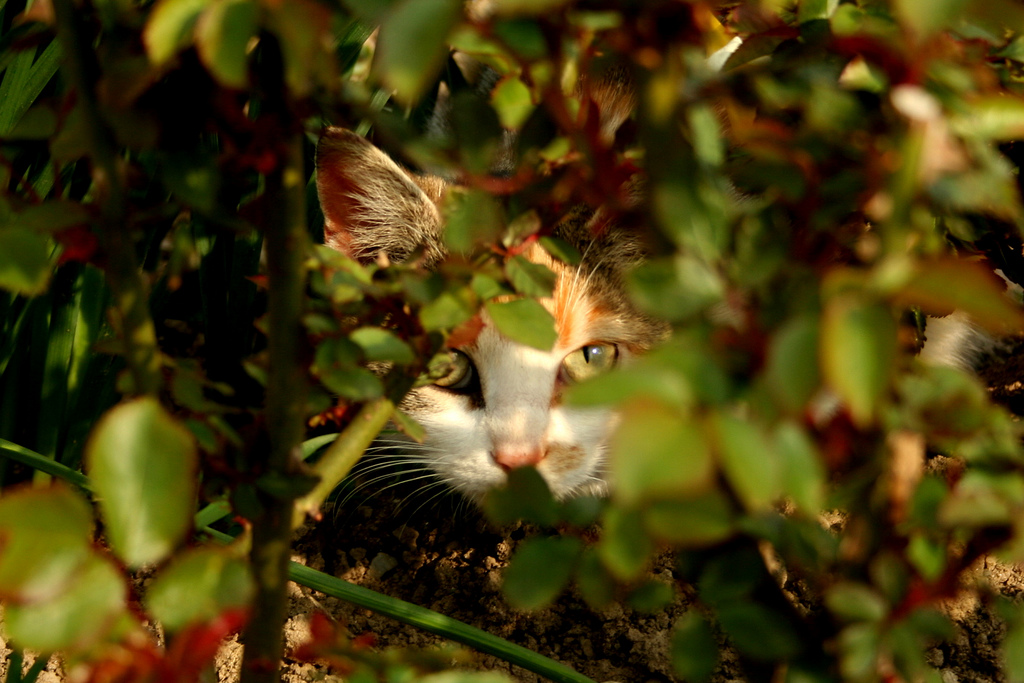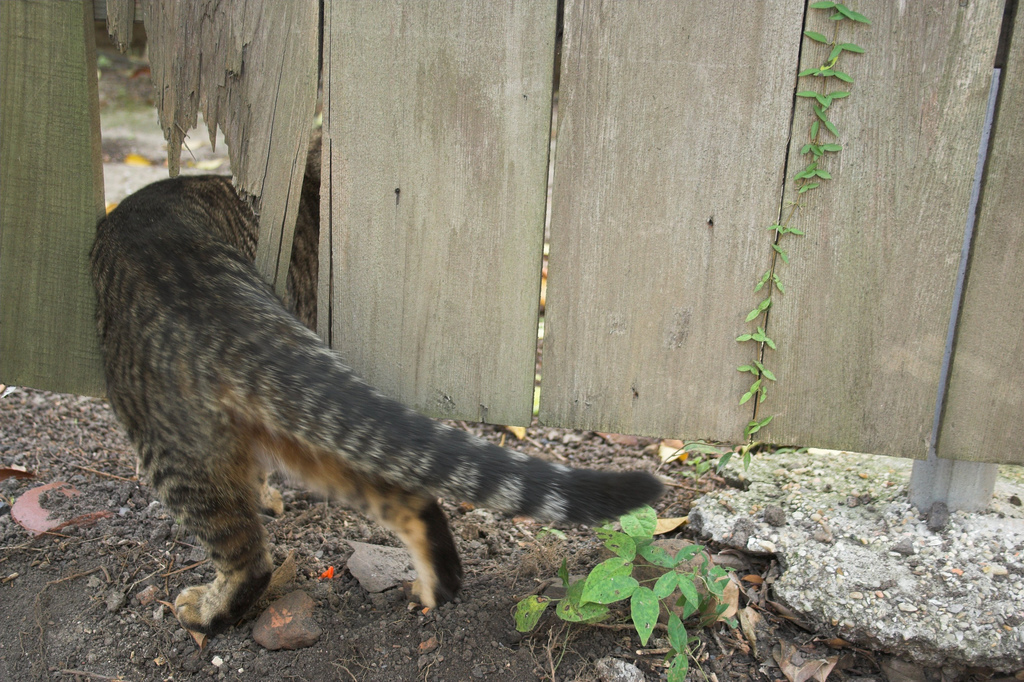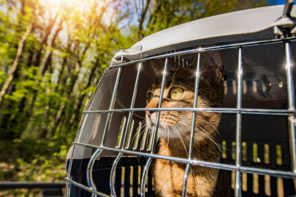We all know it’s important to keep your cat leashed and in the proper harness, but we can’t always predict just how sneaky and slinky our feline friends are going to be. Introducing your cat to the outdoors is an exciting experience for them, and sometimes they’re all to eager to do some exploring on their own! Here’s what to do in the event that your cat escapes – whether you’re on a hike or at your house.
Keep your cool
In his primer on cat escape artists, Jackson Galaxy stresses the importance of remaining calm. Remember, cats are rather skittish and will only run farther when startled. Instead, Galaxy says to “call their name very gently.”
If your cat gets away because they’ve been frightened, keep in mind that loud noises and other animals will only scare your cat more. It’s important to remain calm and focus on calming your cat down, too — wherever he or she may be. It’s all about getting them to trust you so they can know it’s safe to come back.

Check the surrounding foliage twice, if you have to! Cats are experts at remaining unseen. (Photo: MelkiaD/flickr)
Different cats respond differently
If your cat has gotten too far away or has disappeared completely, it’s important to note that the next step depends on whether your cat is new to the outdoors or an experienced outside cat. According to the Missing Pet Partnership, cats who are outdoors-only behave in a different way when they’ve disappeared, versus cats who have access to both the outdoors and indoors.
If you are in the process of training your indoor cat to walk on a leash and harness, but he or she escapes, your cat is most likely hiding nearby, not too far from where they escaped. If your cat has always been an outdoor cat, it’s time to get more serious about the search.
“Cats are territorial and they do not just run away from home,” Missing Pet Partnership stresses. “The mystery to solve is: What happened to the cat?”
How your cat behaves when lost also depends on their individual personalities. The Missing Pet Partnership has a great tip sheet that details each cat’s personality and the best method to use to try to get them back home to you.
Lost on a hike
If you are camping, hiking or exploring in new territory and your cat gets away – and they don’t respond to you calling their name softly – immediately search all the nearby nooks and crannies where they could be hunkered in and hiding.
A flashlight may help catch the reflection of your cat’s eyes if he or she is hiding in a dark spot. Keep an ear out for sounds, but don’t count on hearing their meows. In new and unfamiliar territory, the Missing Pet Partnership says these displaced cats will not call out for your help.
If your cat has escaped up a tree, there are a few things you can do. Remain calm, and take out food and treats you may have on hand to lure them down on their own. Sometimes all it requires is a little patience.
If your cat is injured or too young to easily get down the tree, you’ll have to find a way up to retrieve him. Pet 360 recommends calling a local tree service instead of the fire department. You can also call a local vet to find out what services they recommend.
If it’s getting dark and you still haven’t located your furry friend, never fear. WikiHow suggests searching again after nightfall. “Lost cats are sometimes more willing to leave their hiding places at night, when they can rely on darkness for safety,” they explain in their article “How to Find a Lost Cat.”
The Missing Pet Partnership suggests setting a humane trap, and they recommend the Tru-Catch brand in particular. A motion-activated feeding station camera in the area where you lost your cat could very well help you track him or her down. Lots of wild animals will show up for a snack but it’s possible that you’ll find your cat in one of the photos.
How you can prepare now
The best way to keep your cat at your side while you’re trailblazing is to keep them secure in their harness, and always leashed. Check out our article on leash training to maximize your cat’s comfort with this concept. Be sure to put contact information on a collar on your cat and, if possible, microchip him or her. Keep a recent photo of your cat handy (like that’s even a problem!). And, believe it or not, you can train your cat to come when called.
Worse comes to worse, Galaxy sums it up: “Make sure your cats have a collar and tag, microchip and clear picture for flyers in case they get lost.”
Before you take your cat outside, please familiarize yourself with these adventuring best practices.

Atlanta-based artist R. Land’s famous “Loss Cat” poster is an example of what not to write on yours, but we love it anyway. (Photo: R. Land)





